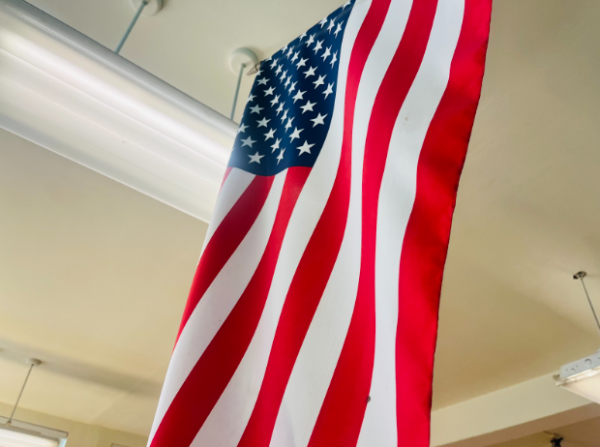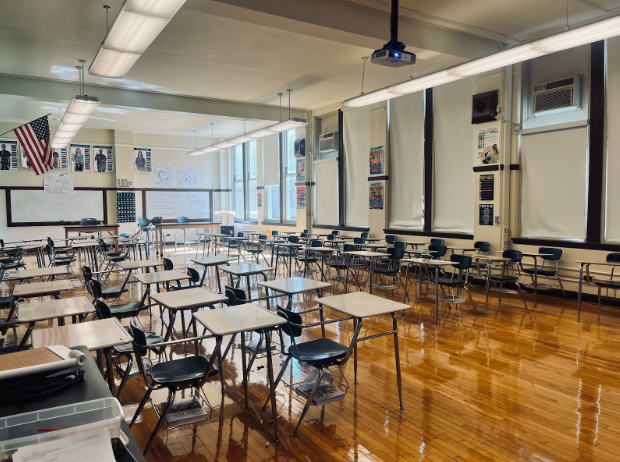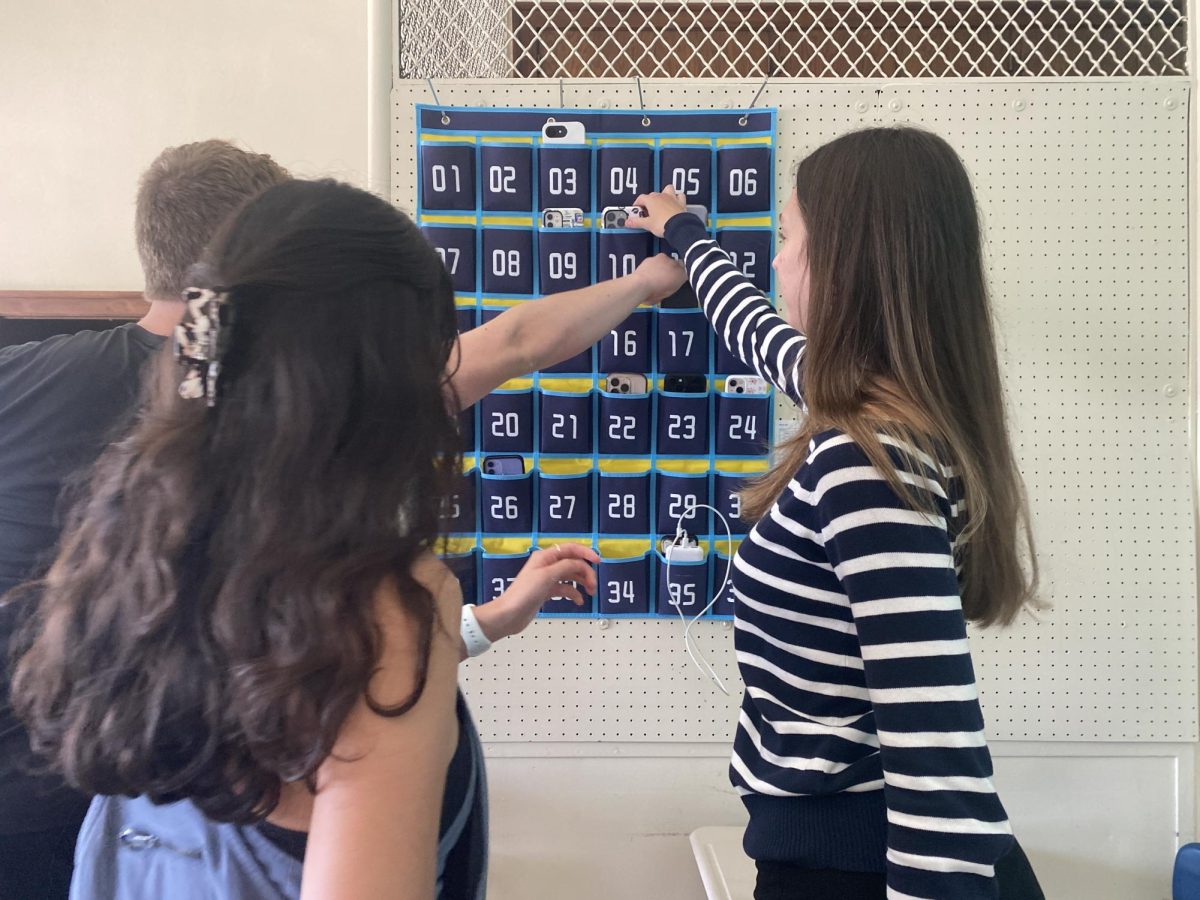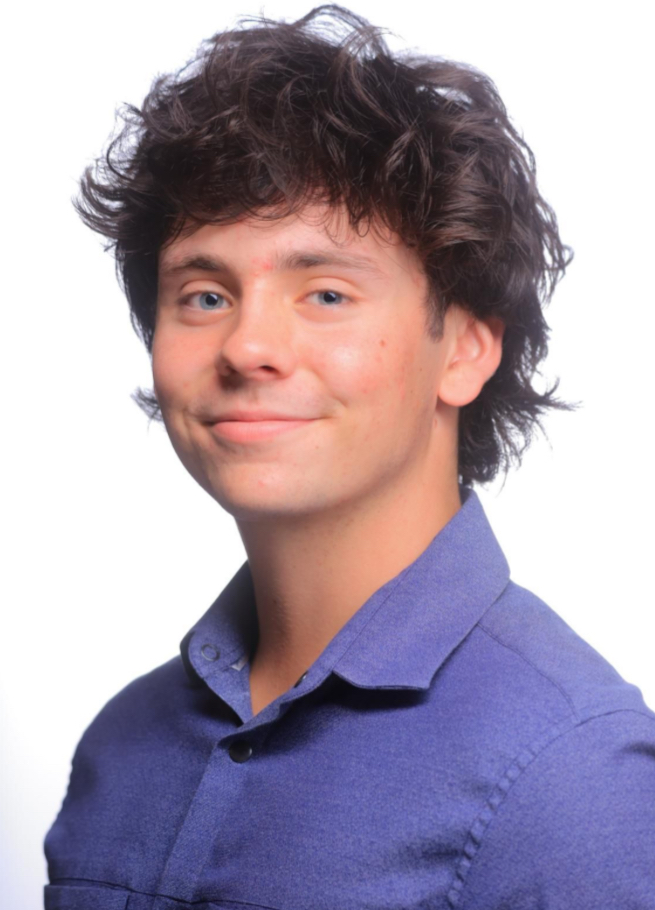“Okay Boomer, Time’s Up!”, reads the sign of a young protester in Kathmandu, Nepal, according to The Atlantic. On Sept. 8, thousands of young people from ages 13 to 28 surrounded the streets of Nepal, with one goal in mind: to gain justice.
Booming streets that once were filled with citizens looking for a new life were left with thick smoke covering the air and fear lingering among the people.
Children of rich Nepali heirs were being put into high places of politics and higher education outside of the country. In social media posts these heirs flaunted their belongings overseas as Nepali residents lived in poverty and economic disparity.
In response to these complaints on Sept. 3, a few days prior to the protests, Prime Minister KP Sharma Oli issued a state ban on social media platforms. This included major communication and news platforms such as Instagram, X, Youtube, Facebook, and WhatsApp.
According to BBC, the government ban on these social media platforms prompted discussions among the youth of Nepal on the corruption of their government. Despite seemingly proper living conditions, the unemployment and emigration rates of Nepal citizens has risen due to a lack of industrialization.
As young Nepali residents used non-digital methods to promote their movement, a peaceful protest shortly followed the ban in Kathmandu, Nepal, near Parliament’s building. In response, the government implemented a curfew on the protesters. Protesters who refused to comply with military enforcement were met with rubber bullets and tear gas.
These violent military interactions turned a peaceful protest into a social rebellion, as Gen Z Nepali citizens fought fire with fire. With this came the arson of Singha Durbar, a significant government complex building in Nepal.
More than 1,000 people were hospitalized, and at least 70 people were killed in the riots, according to the BBC.
Ultimately, the Prime Minister of Nepal stepped down from his position due to the current stressors within the government. The lawmakers are currently attempting to come to a peaceful agreement with Gen Z organizations, as they look for a temporary government to rely on.
Around 8,000 miles away in the U.S., citizens look at headlines on the reported protests in Nepal with nuanced opinions. Under one Ticktok post by @bugsssbunnnyyy, users have commented that these protests highlight the voice of Gen Z shaping the future, while others refer to the protests as an “anarchist” movement, often compared to novel Lord of the Flies. One of the main topics of discussion being political engagement within the younger generation– specifically Gen Z.
A generation born with technology by their side, Gen Z has used their political voice through social media platforms, as information consumed rapidly by the average person. As of recently, Chicago residents have used social media to promote anti-deportation protests as ICE raids increase in Latino neighborhoods, according to NPR.
“If you look at the events in Nepal in the last week, and their engagement, I think you can see that as Gen Z comes into their young adulthood we’re seeing [social media] have a role in activism more so than before,” said social studies teacher Timothy Hopps, “That’s starting to come to fruition. Does it amplify their voice? Well, social media has probably been one of the most important factors of socialization.”

Millions of videos and pictures are posted online by social media users each second, and within these posts, humans voice their opinions to find communities or algorithms that align with their values. With this, comes ever growing political discussions and influencers prompting said discussions. Influencers such as Hasan Piker, Charlie Kirk, Dean Withers, and Joe Rogan have racked up millions of views by supporting or refuting popular movements such as the Black Lives Matter Movement, and Free Palestine/Pro-Israel movement in recent years.
Despite the amount of political opinion pieces posted by the younger generation through the growing usage of social media, voting rates in America have dropped in younger voters by 3% since the 2020 election. Additionally, there has been a huge gap in the demographics of Gen Z within the two parties. According to Circle Tufts.
As voting rates drop, it raises the question: How politically engaged is the younger generation?
According to the Illinois Report Card, at Lane Tech, there are currently 4,525 students enrolled. Half of them are enrolled as male, while the other half is enrolled as female. Within this population, 36.4% are White, 34.9% is Hispanic/Latino, 10.3% is Asian, and 6.7% is Black/African-American.
Due to its diverse population, many polarizing ideas float through the Lane Tech hallways and naturally make their way into History and English classes. In an urban area such as Roscoe Village, though, many ideas blur together to create a fairly progressive environment. Although, this isn’t the case for all schools in Chicago.
“I would say, being in two different schools, the demographics of this school and the one I started my career at were a bit different,” said Hopps. “Have I seen a rise of conservatism among my students? Yes, and among the predictable demographics. Simple. Why? I mean, take what you know about political socialization and you can apply it, and take trends in American politics and apply it. Social media plays a role in that… Certainly the patterns that are taking place in broader society, like are reflected in the student population as well.”
As our two party system begins to become more divided on social issues due to political figures using their platforms to vilify opposing groups, Americans build an intolerance to one another, according to CNN. Donald Trump uses terms such as “Psycho Joe” on X to refer to his previous presidential candidate, Joe Biden, along with former U.S. representative Gerry Connolly claiming Trump’s statements to be “pure disinformation.”
The he-said-she-said way of politics has wedged parties further away from each other. This has made it harder to find common ground, causing younger people to stray away from conflict, and eventually politics as a whole.
In a recent study done by The United Way of the National Capital Area in 2024, political analysts examined the responses of 1,000 people within Gen Z to find that 32% of Gen Zers are politically engaged in activism.
After winning the presidential election and taking office in January 2025, President Donald Trump has distributed over 150 executive orders combating many controversial ideas. One of these was the invokement of the Alien Enemies Act of 1789, granting him the ability to remove people from the U.S. without due process, according to Whitehouse.gov. These controversial executive orders have been broadcast on a larger scale, causing outrage in liberals within the U.S., referring to his policies as “tyrannist” and “unconstitutional,” according to CAP and Our Public Service.
“I think trust in institutions has been deteriorating, and quite frankly, rightfully so, because we have had some institutions really fail to deliver on what they should do for the American people, providing Americans with safe, affordable communities to live in,” said social studies teacher
Steven Parsons when referring to public reactions to current events. “And I think, once again, it’s generational, because I think older generations can remember a time when it seemed like the government was more responsive and more relaxed.”
Despite surface level apathy and a distrust in institutions due to current events, the younger generation holds hope for the future as they make their way into a new democracy.





